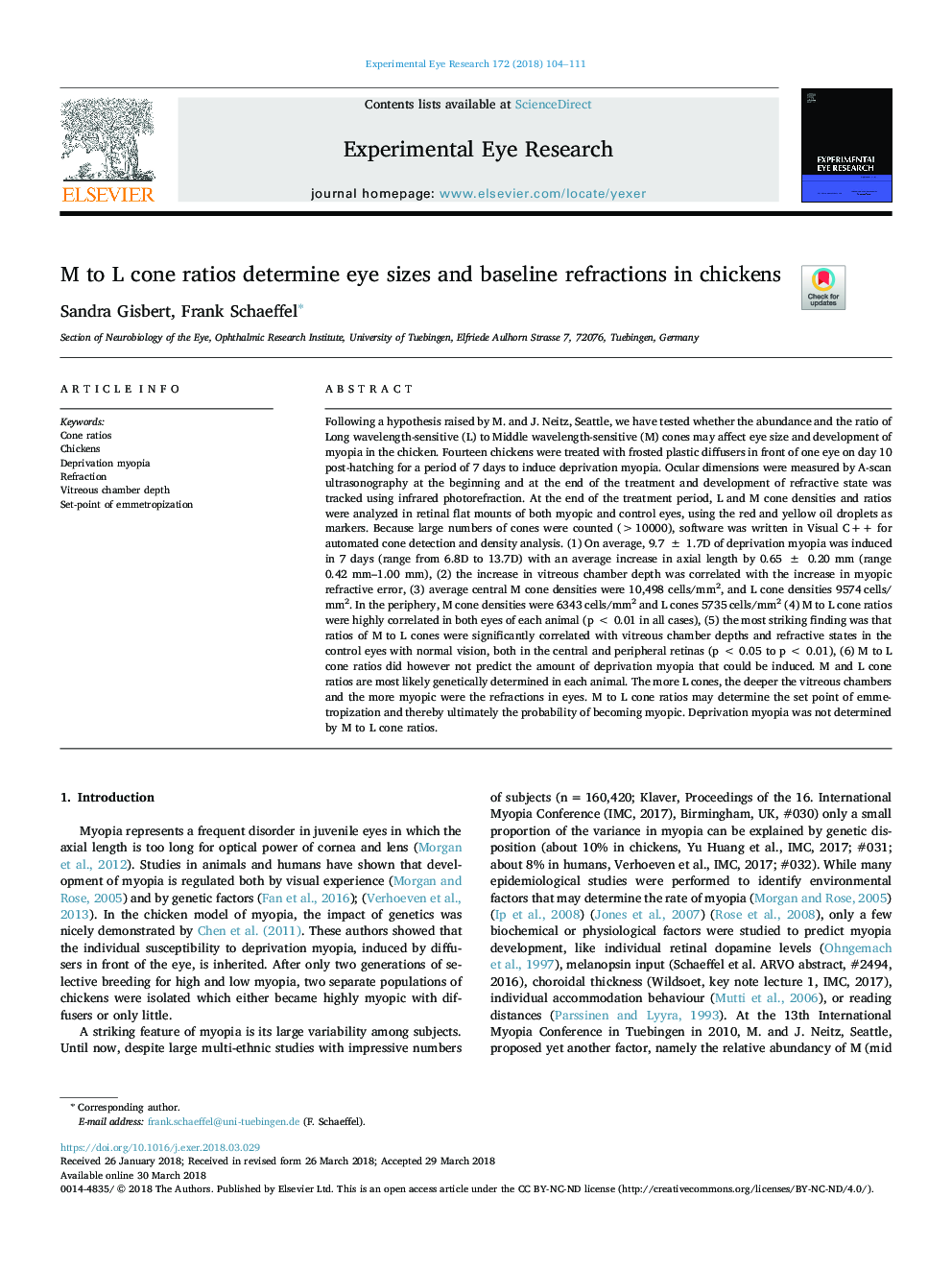| Article ID | Journal | Published Year | Pages | File Type |
|---|---|---|---|---|
| 8791968 | Experimental Eye Research | 2018 | 8 Pages |
Abstract
Following a hypothesis raised by M. and J. Neitz, Seattle, we have tested whether the abundance and the ratio of Long wavelength-sensitive (L) to Middle wavelength-sensitive (M) cones may affect eye size and development of myopia in the chicken. Fourteen chickens were treated with frosted plastic diffusers in front of one eye on day 10 post-hatching for a period of 7 days to induce deprivation myopia. Ocular dimensions were measured by A-scan ultrasonography at the beginning and at the end of the treatment and development of refractive state was tracked using infrared photorefraction. At the end of the treatment period, L and M cone densities and ratios were analyzed in retinal flat mounts of both myopic and control eyes, using the red and yellow oil droplets as markers. Because large numbers of cones were counted (>10000), software was written in Visual C++ for automated cone detection and density analysis. (1) On average, 9.7 ± 1.7D of deprivation myopia was induced in 7 days (range from 6.8D to 13.7D) with an average increase in axial length by 0.65 ± 0.20 mm (range 0.42 mm-1.00 mm), (2) the increase in vitreous chamber depth was correlated with the increase in myopic refractive error, (3) average central M cone densities were 10,498 cells/mm2, and L cone densities 9574â¯cells/mm2. In the periphery, M cone densities were 6343â¯cells/mm2 and L cones 5735â¯cells/mm2 (4) M to L cone ratios were highly correlated in both eyes of each animal (pâ¯<â¯0.01 in all cases), (5) the most striking finding was that ratios of M to L cones were significantly correlated with vitreous chamber depths and refractive states in the control eyes with normal vision, both in the central and peripheral retinas (pâ¯<â¯0.05 to pâ¯<â¯0.01), (6) M to L cone ratios did however not predict the amount of deprivation myopia that could be induced. M and L cone ratios are most likely genetically determined in each animal. The more L cones, the deeper the vitreous chambers and the more myopic were the refractions in eyes. M to L cone ratios may determine the set point of emmetropization and thereby ultimately the probability of becoming myopic. Deprivation myopia was not determined by M to L cone ratios.
Related Topics
Life Sciences
Immunology and Microbiology
Immunology and Microbiology (General)
Authors
Sandra Gisbert, Frank Schaeffel,
